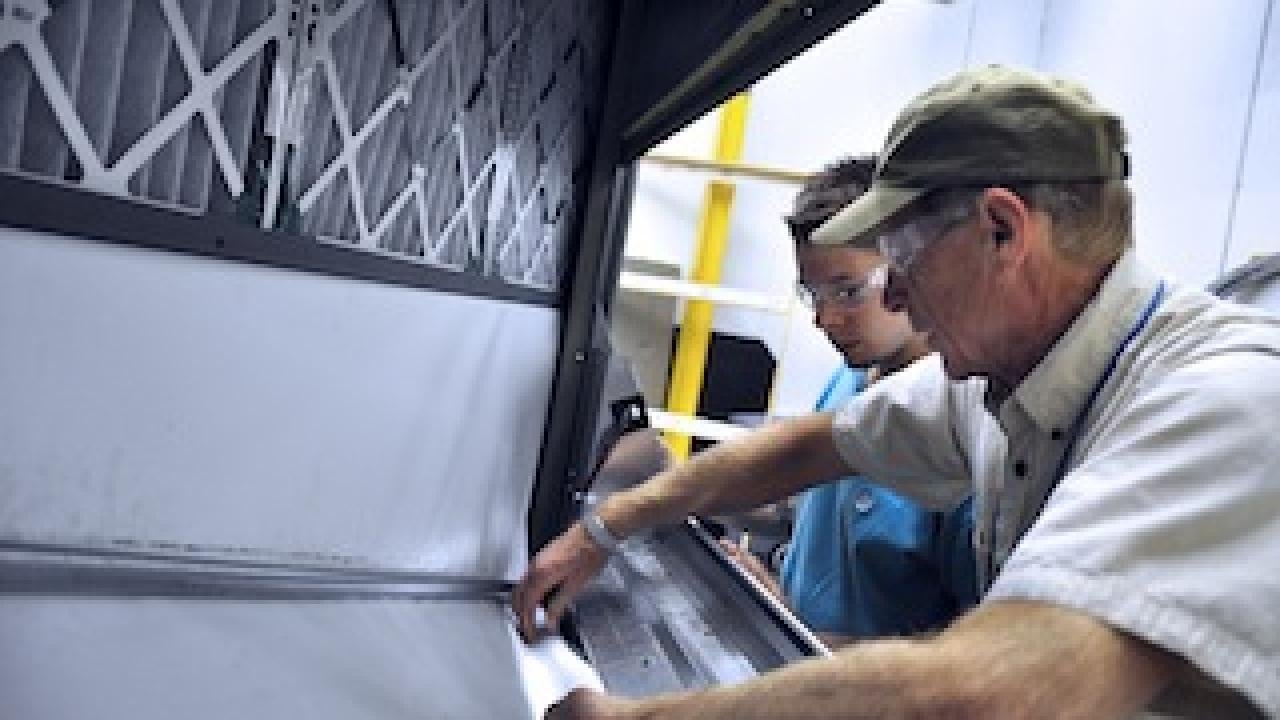A University of California, Davis, challenge to build more energy efficient air conditioning has spurred a major global manufacturer to build a rooftop air conditioner that is 40 percent more energy-efficient than conventional units.
Trane, a provider of heating, ventilating and air conditioning systems, is the second manufacturer to achieve Western Cooling Challenge certification. The challenge, established in 2008 by the UC Davis Western Cooling Efficiency Center, is the most demanding certification of its kind. It aims to help manufacturers develop more efficient cooling technologies, particularly for hot, arid climates, such as in California. The program also helps building owners install and use those products.
Trane achieved UC Davis certification for the Voyager DC, a hybrid rooftop air conditioner that uses indirect, evaporative cooling to increase cooling capacity and reduce peak electrical demand.
Following laboratory testing, the equipment was verified by the UC Davis Western Cooling Efficiency Center.
“Since air conditioning is the largest portion of electricity used during hot weather, the potential for 40-percent savings is enormous,” said UC Davis Western Cooling Efficiency Center associate engineer Jonathan Woolley. “Many are not yet aware that new electric utility rates will saddle commercial building owners with large additional charges for power used during peak periods. Trane’s Voyager DC met our performance goals on the mark, and promises to be one of the most cost effective, climate-appropriate cooling technologies available for commercial buildings.”
Much as sweat cools the human body, the Voyager DC uses water evaporation to cool outside air for the condenser on an otherwise conventional air conditioner. The air conditioner then uses the water chilled by evaporation to cool the hot outside air used for building ventilation. Such techniques increase the number of hours a system can use “free cooling” to cool a space, and dramatically reduce the amount of time a system has to operate at full speed. In addition, the Trane Voyager DC incorporates variable speed fans, staged compressors, and other measures to maintain high efficiency rates.
For a product to be Western Cooling Challenge certified, it must be at least 40 percent more efficient than Department of Energy 2010 standards.
Entries must also be market-ready. Trane is the first major manufacturer to enter the challenge, reflecting an industry interest in marketing air conditioning systems that are designed for specific climates.
The other winner, in 2009, was Coolerado Corp. of Denver, Colo.
The California Public Utility Commission’s Statewide Energy Efficiency Strategic Plan calls for the rapid commercialization of cooling technologies that are adapted for dry, hot climates. The plan specifies that 70 percent of air conditioners installed in 2020 should be “climate appropriate.”
Media Resources
Kat Kerlin, Research news (emphasis on environmental sciences), 530-750-9195, kekerlin@ucdavis.edu
Jonathan Woolley, UC Davis Western Cooling Efficiency Center, (530) 204-7619, jmwoolley@ucdavis.edu
Dale White, Trane Inc., (916) 577-1104, djwhite@trane.com
Paul Fortunato, UC Davis Western Cooling Efficiency Center, 530-752-0280, pfortunato@ucdavis.edu
